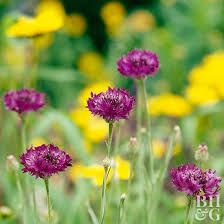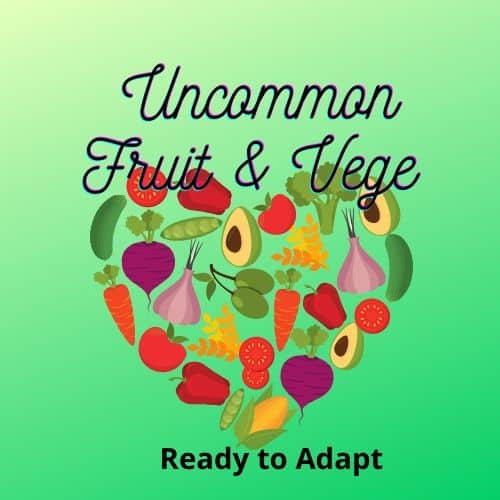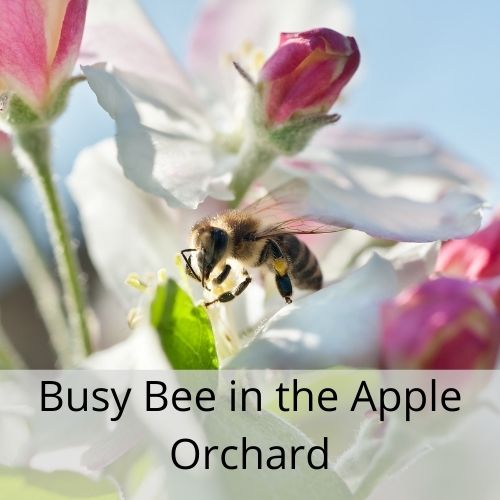
” Plants are conscious of the company they keep”
Pamela Allardice
Most of us have heard somewhere that basil and tomato not only taste great together but they also complement each other when grown together. Companion Planting has been practiced for centuries. Rather than reaching for harsh chemical sprays and artificial fertilizers the natural or organically oriented gardener is happy to experiment with time-honored, environmentally safe methods.
Our theme this month is using edges and valuing margins and what better way to do that than to acknowledge the interconnectedness of nature through companion planting.
In natural conditions, plants do grow in close communities with a number of different species side by side rather than the rigid rows of single crops on modern farms and vegetable gardens. Old fashioned cottage gardens were a riotous spread of flowers, herbs and vegetables, jumbled together in a fashion that perhaps makes more sense than at first glance.
The skills associated with companion planting develop from the close daily observation of the way the plants in the garden grow together. One can easily imagine generations of gardeners leaning intently on their forks eager to share the secrets of their successes and warn against hard-learned lessons.
In the simplest terms, observations over many centuries have given us valuable knowledge that has been passed down through the generations. For example, Planting spinach between rows of broad beans will shade the soil and prevent it drying out. Dry and cracked soil attracts blackflies – and blackflies eat broad beans.
Strawberries grow better, fruit better and taste better when grown with borage in the bed alongside them.
We do know that the roots of plants and herbs can exude substances which hinder the growth of others nearby – this we know to be allelopathic. (See more about allelopathy here) We also know that some of these exudates can assist greatly the growth of nearby plants or even kill or repel pests and disease. For instance marigold, dahlias, asparagus and some salvias exude a natural nematode repellent from their roots.
Nature is a dance between life and death said Paul Stamets, and when you understand that you have the power to become the choreographer.
Companion Planting can become quite mysterious, entering the realm of folklore with claims that cannot be substantiated but inexplicably work. Whatever the reasons behind companionable planting arrangements, it is clear such schemes can produce happier, healthier plants and provide better insect control than a monoculture. The advantages of companion planting far outweigh the seemingly chaotic nature with its intermingled riotous bevy of fruit, flowers, vegetables and herbs. It does however, not need to be complete chaos. Simply separating your rows of vegetables with a strip of their best friends will aid in production, pest management and be aesthetically pleasing to the eye. The added bonus in doing so is that you will also be supporting natural pollinators and encouraging them to be present in the garden when needed.
Presented here are some common and not so common knowledge about the company that plants keep and the interactions they perform sometimes to detriment of pests and disease. While not meant to be an exhaustive list we hope that it will open your eyes to the community spirit in your garden.
 Alfalfa (Meicago Sativa) Lucerne
Alfalfa (Meicago Sativa) Lucerne
Periennel, pretty and plentiful – Alfalfa or Lucerne is also exceptionally deep-rooted (up to 10m) feeding on deep mineral-rich subsoil that other plants rarely reach. Alfalfa is by nature a miner that assists in bringing those minerals to the surface that other plants cannot obtain. It is one of the most powerful nitrogen fixers too. Chopping and Mulching with Alfalfa have long been used for this reason. Those minerals return to the soil with decomposition and become available to other plants. It is also a good source of both calcium and protein as well as Vitamins A, B, and C. Sprouts eaten contain as much Vitamin C as six glasses of freshly squeezed orange juice. As a companion alfalfa, works to shade the soil, provide nitrogen and other minerals but also as a trap crop for its ability to attract and trap certain pests. Plant with grape vines and fruit trees. Keep clear of members of the onion family. Dandelion is its successor having had the way cleared by the lucerne.
 Amaranth (Amaranthus retroflexus) -Love Lies Bleeding or Pigweed
Amaranth (Amaranthus retroflexus) -Love Lies Bleeding or Pigweed
A distant relative of the beet family, this hard annual is making a come back after herbalists and modern medicine have found it to be not only a grain of significance but also having the highest content of iron except for parsley. High in Vitamins A and C it is used as a salad green or cooked like spinach in some countries. Amaranth is a deep rooting plant and is valued for decompacting soils. As a companion it is beneficial grown with onions, corn and potatoes. When finished it dies back to improve soil quality by initally acting as a mulch and then rapidly breaking down to form a nutrient rich subsoil. Beware of it choking out other vegetables.
 Asparagus (Asparagus Officinalis)
Asparagus (Asparagus Officinalis)
Cultivated since 200 BC, asparagus is one of the best sources of vegetable protein and fibre. Well known as a diuretic, it has long been used foor patients suffering urinary tract infections by naturopaths. But asparagus really comes together with tomatoes. Tomatoes contain solanine which protects the asparagus plant from its arch enemy the asparagus beetle. But the association doesn’t end there. After the asparagus spears have been harvested drop some tomato plants in around the crown to help repel weeds and as a thankyou the asparagus will repel the nematodes that often plague tomatoes. If you are planning a veggie garden set asparagus, tomatoes, cabbages, marigolds and beans side by side in rows. Each will protect its neighbor from insect pests. Parsley and basil also do well near asparagus.
 Bay Leaf Tree (Laurus nobilis)
Bay Leaf Tree (Laurus nobilis)
The Greeks and Romans revered the bay tree. It was thought to be a great honour if victorious sportsmen or heroes were presented with a wreath of bay leaves. Its sweetly scented wood is also used for smoking meat and fish. Try adding some to your next barbeque batch of prawns. Widely used in many forms of cooking this savoury herb is indispensible both in soups and stocks but also in many commercially prepared relishes and appetisers. Belonging to the same family as cinnamon and camphor it is very effective at repelling pests and disease in the garden. Grubs and caterpillars will give it a wide berth. Placing dried bay leaves in stored grains such as oats, rice or beans will discourage weavils from invading. Scattering the leaves amongst the pantry shelves will deter ants and they can be used as a substitute for poison moth balls as well. Try planting your more susceptible plants beneath or close by for protection.
 Birch (Betula)
Birch (Betula)
While not appropriate for every garden setting due to their size the Birch tree is worth consideration if you have the space. Generations of children have learned that the sap of the silver birch is as sweet as sugar and makes a delicious snapping gum. In leaner times, it was not uncommon for the lady of the house to tap the tree in a similar way as maple, boil it down to thicken and use it as a substitute for treacle. The leaves or needles are also naturally antiseptic and so boiling a handful in water provides a good first aid treatment for minor cuts and scratches. But the greatest advantage is that when planted near a compost pile, the roots of the birch excrete a substance that encourages fermentation to more rapidly break down your compost. It is also a useful companion to most plants because the dropped leaves help to nourish exhausted soils.
 Blackberry (Rubus Nigra)
Blackberry (Rubus Nigra)
A much-maligned berry but so useful. The delicious berry has been eaten for thousands of years both fresh and stewed but did you know you can dry them and pound out to a sweet flour for pastry making? The leaves can be used as a dressing for minor burns and as a pickup added to bath tonic or just applied damp to clean skin for a toning effect. Many regard this plant as a pest and indeed some governments mandate its removal. While it may be regarded as a weed, we in the know understand that it is simply not so. Blackberry is a succession plant and has a wondrous ability to breakdown and prepare infertile soil. Many gardeners will attest to its ability to activate compost piles quickly. Apple trees particularly benefit from blackberries as an underplanting and the blackberries themselves benefit from mulching with wild stinging nettle but be sure to wear your protective clothing. Blackberry only becomes invasive if unmanaged. A well-managed blackberry bush with its growing tips elevated off the ground will largely stay put.
 Elder (Sambucus nigra/Sambucus canadensis)
Elder (Sambucus nigra/Sambucus canadensis)
Elderberries have long been used to make pies, sauces and the like. The flowers are also prized for making wine, cordials and even preserving apples. Read more about the apple/elderflower combination here. A spray made from the leaves is a useful all purpose insecticide but be warned it is extremely toxic. The elder shrub or tree is helpful when grown near the compost pile as it assists in fermentation of waste materials. They are heavy feeders too so this placement assists the tree as well. There is a legend that has the elder tree being very lucky, protective, the favoured haunt of witches and should never be offended. So if you are planning to prune your tree you may want to maintain the tradition and ask its permission before doing so.
 Euphorbia
Euphorbia
The spurges – Euphorbias in general seem to help to protect other more tender plants by encouraging a warmth or preserving soil, simulating a warmer climate. It is not clear how they do this and research into the plant family in general is continuing however they have been shown to have a protective effect on young fruit trees. Their sharp milk sap is hated by mice, rats ad moles making it valuable as a companion. Keep away from grape vines though as they have a negative effect. Remember the plant itself is poisonous so best leave it out of the vegetable patch.
 Feverfew (Tanacetum parthenium)
Feverfew (Tanacetum parthenium)
A familar plant of the cottage garden Feverfew is not to be confused with Pyrethrum even though is has similar spicy scent and properties. Feverfew flowers may be brewed up an insecticidal tea to spray against most pests but especially mushroom fly, thrip, potato moth, aphid and red spider mite. Feverfew has a long medicinal history of use as well. Bruised leaves made to a tea worked wonders for headaches long before the advent of paracetamol.
 Fungi (various edible and inedible)
Fungi (various edible and inedible)
Fungi as we have written in other articles are vital to our ecosystems. Fungi should also be considered a companion in the garden. Truffles for example are a fungus that form a symbiotic relationship with tree roots to a mutual benefit. Not only do fungi assist in the decay of organic materials but they also make fungal sugars which in turn assist our plantings. Indeed some plants such as orchids cannot survive unless there is mycorrhizal fungi present. Remember though that not all mushrooms (fruiting body of fungi) are edible and unless you are 100% sure of the identity you are better to leave it right where it is. Fungicides are designed to stop fungal disease and are not the friend of mycorrhizal fungi. So keep your use of them away from your beneficial plantings.
 Garlic (Allium Sativum)
Garlic (Allium Sativum)
Garlic is one of the oldest cultivated plants known. In Ancient Eygpt, slaves were given a daily dose in the belief that it made them stronger and gave greater strength. We certainly know of its medicinal properties nowadays as well. Garlic has also been used through the ages to ward of pests from ants and aphids to Dracula himself. There are many uses for this humble plant to be sure. The root secretions from garlic are also beneficial in the garden for some plants. Grown in a circle around fruit trees especially apple trees protects against aphids, weevils and borers. In the vegetable patch planted with beetroot, tomatoes, lettuce and roses it will deter onion fly but be careful. Garlic is no friend to peas, beans, cabbages and strawberries. Garlic based homemade sprays can also be used to treat blight, mould and fungal diseases on tomatoes and potatoes. It is also an effective insecticide particularly for killing mosquitoes.
 Geranium (Perargonium)
Geranium (Perargonium)
Grandmothers around the world have these in their gardens. These are a great many varieties and scents available from lemon to cinnamon and rose. Scented leaf pelargoniums are used extensively in the cosmetics and perfume industries and have been for years. They are a brilliant companion in the garden as the leaves may be used fresh or dried to flavour sweets, cakes, jams and desserts as well being extensively used as potpourri. These versatile plants will repel cabbage white butterfly and the white variety will act as a trap crop for Japanese beetle which attack roses, corn and grapes. Caterpillars enjoy snacking on geraniums but this can be deterred by spraying with a tea made from pepper and soapy water. They can be susceptible to botyrtus rot but once the affected plant is removed spray with elder, lilac or casuarina tea and strike a new cutting from an unaffected plant.
 Horehound
Horehound
This member of the mint family has been used over the centuries for everything from fly repellent to a cure for common ailments and dog bites. It is known as a valuable expectorant in fighting colds and flu, often included in natural cough lozenges and syrups. An infusion boiled with sugar makes and economical cough lozenger. But horehound is also valuable in the garden, particularly when paired with fruits and vegetables because it’s bitter juice repels caterpillars and grasshoppers. It grows particularly well with tomatoes causing them to bear more fruit for longer in the season. Beware of its ability to spread though – so keep it contained and remove the flower calyx as they become spiky and dry before the family pets become entangled with them.
This article is a work in progress and will be continually added to as time and information comes to hand. In the meantime if you are aware of the special benefits of a particular plant please email kym@readytoadapt.com so we can build this resource together.



